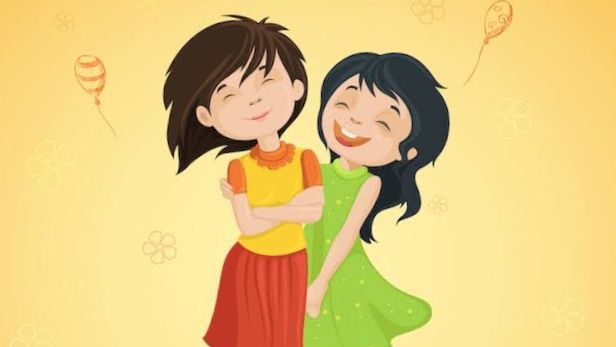Yellow Roses
Nov 10, 2019 • 34 views
Yellow roses are the perfect way to toast friends, lift spirits and send a general desire for well-being because of their optimistic hue and general association with good cheer. And for those who love roses, that's great news— the rose is known for its simple architectural beauty, but some colors are so loaded with meaning that they can be a little tricky to work with. For example, sending your administrative assistant a bouquet of red roses to get-well may raise eyebrows around the office. It's enough to say that with yellow roses, you can never go wrong. Yellow is the age-old spokes-color for warm feelings of friendship and optimism and is long associated with the sun and its life-giving warmth. The color represents joy, wisdom, and power in many Eastern cultures. But while every yellow flower sends a lighthearted message, there is also a positive, serendipitous character in the background of a yellow rose that makes it the whole package.

Friendship <3. (Source: tinybuddha.com)
In general, yellow roses stand for friendship. But what is friendship? Determining a single, fully sufficient definition of friendship can be an insurmountable goal based on the wide range of categories and spheres of life in which form friendships throughout our lives. Nevertheless, most scholars agree that friendship exists within the socio-emotional domain and that interdependence and the voluntary nature of interactions are its characteristics.
All of us may have their own definitions of what a friendship should be but in a recent study the following themes of friendship emerged out.
Friendships are considered to exist when pleasure is taken in the company of another.
The construct of friendship implies reciprocity and give-and-take. This is not in the sense of an immediate even exchange economic model of behavior, rather, that support is expected to flow both ways as needs arise for either party.
Levels of friendship commitment vary over a lifetime, depending on the energy required by family, career or other commitments at the time.
We engage in friendships on a voluntary basis when we recognize that the other person is also making the choice to engage in the relationship.
Most importantly, genuine friendships flourish when mutual respect exists between friends.
Friendship models show that there are two main factors influencing our choice and pursuit of potential friends: individual factors and environmental factors. Individual factors include variables such as availability, social skills, self-disclosure, similarity, and closeness. Influences such as proximity, location, habits, and life events include environmental factors.

How do we choose friends? (Source: dailymail.co.uk)
Research continues to support our preferences for friends we believe are similar to ourselves and have personalities we enjoy being around; choosing friends like these most likely diminishes the potential for interpersonal conflict.
Do looks matter while choosing friends? The level of attractiveness comes into play during the initial stages of friendship. People, in general, tend to be drawn towards beauty, and they tend to believe that attractive people are more like them in their attitudes and values, regardless of where they rank in the world of beauty or style. Researchers have found some intriguing facts while exploring this seemingly innate attraction to attractive people. Interestingly, studies have reflected that an attractive face tends to feel familiar to us—we feel like we have already interacted with this person previously, even if we have not. This feeling of recognition may partly explain why we might be drawn initially to an attractive person—their presence may help us feel comfortable in a social situation.
However, there is not much evidence suggesting attractive women have more friends than less attractive women. In fact, research shows that we pretty much go for friends who we would rank at about the same level of attractiveness that we rank ourselves. This is also true for long term romantic partners.

Social Skills matter. (Source: mycipc.com)
However, what matters more than looks is interaction. We also want friends with good social skills as it makes the development of friendship much easier. Not only do good social skills help facilitate a budding friendship, but researchers have also found that positive interactions bring about a sense of familiarity. At the end of the end, everyone would like to surrounded by people who make them feel good about who they are, and what they enjoy doing.
Not all friends can meet all the preferences but those who support the aspects of our identities that matter the most are the ones we are most likely to count among our collection of good friends.
Why is friendship important?

Life is better with friends. (Source: itsallaboutusyeah.blogspot.com)
Well, there are many reasons why friendships are important in our lives. In her recent book, Friendfluence, Carolin Flora, brought together the available and wide-ranging academic literature on friendship with personal insights and interviews, exploring all aspects of friendship in a thoughtful and engaging way. This book will help you understand why friends are one of the most important aspects of your life. Some key takeaways from Flora’s work as compiled by Whitbourne are:
Friendfluence affects you in more ways than you realize- Friendfluence is the powerful and often unappreciated role that friends, in past and present, play in determining our sense of self and the direction of our lives” (p. 6). Whether we realize it or not, our friends have shaped who we are today. We are even the product of friends who are no longer our friends.
Friends give us vital life skills- There are many perks of friendship including, self-awareness, happiness, advancement in career, an inspiration for reaching one’s goals, sharpening your mind, etc.
Childhood friendships- Early friendships have a vital role to play because they occur while key developmental changes occur. they allow us to learn some of the essential life skills, and they also form the "narrative" of our life.
Teen friendships shape future romantic bonds- Friendships during adolescence are a training ground for the later long-term bonds that will evolve through adulthood.
Friends can give you a reality check- As Flora points out: “friends are better at describing our behavioral traits than we are” (p. 132). And because friends know us so well, they are able to see things that we can’t and aren’t afraid to share their dose of reality with us.
Of course, there are many more reasons why friendship is important and you can find them here.

For some beautiful people. (Source: proflowers.com)
I would like to tell some special people that they deserve a million yellow roses from me. Here’s a bit of Shakespeare for you all.
Sonnet 104
To me, fair friend, you never can be old,
For as you were when first your eye I eyed,
Such seems your beauty still. Three winters cold
Have from the forests shook three summers’ pride;
Three beauteous springs to yellow autumn turned
In process of the seasons have I seen;
Three April pérfumes in three hot Junes burned,
Since first I saw you fresh, which yet are green.
Ah yet doth beauty, like a dial hand,
Steal from his figure, and no pace perceived;
So your sweet hue, which methinks still doth stand,
Hath motion, and mine eye may be deceived.
For fear of which, hear this, thou age unbred:
Ere you were born was beauty’s summer dead.
